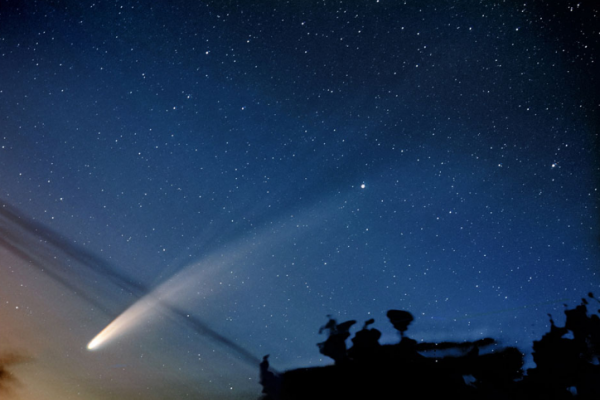Ohio SkyLites - July 2022

Constellations and Astronomical Events Visible in July
Written by Alyssa Whalen
Planets
In case you missed it, the planets aligned the morning of June 24th, 2022. Although they won’t be perfectly aligned again for a while, you can still go out in the early morning to see the planets wander through the sky. Saturn will rise first, right before midnight, and Mercury will rise at the latest, around 5 in the morning. Jupiter will be up right before 2 am and Mars right after 2 am. If you’re lucky with Ohio weather and/or Columbus light pollution, you can see Uranus and Neptune in the early morning (3 am and 1 am respectively) with the assistance of a telescope or powerful binoculars.

Moon
The second supermoon of the year will rise this month. Known most commonly as the Buck Moon, July’s full moon will rise Wednesday, July 13th. July 13th is also the day when the moon is at perigee or the point in its orbit where it is closest to Earth. When a full moon occurs on the same day as the moon’s perigee point, it is known as a supermoon because it appears much bigger and brighter in our sky.
Stars/Constellations (Northern Hemisphere)
Summertime is a great time to get out and observe some popular constellations. The Summer Triangle is directly overhead near midnight. This triangle is made up of Vega in the constellation Lyra, Deneb, in the constellation Cygnus, and Altair in the constellation Aquila. If you can find Cygnus, then you know where to point your long exposure camera to get stunning images of the milky way. Follow the swan’s neck as it flies down the plane of the galaxy towards Sagittarius and Scorpius. Other notable constellations are Cassiopeia, Corona Borealis, Libra, and Hercules. If you look to the north, Ursa Major and Ursa Minor are still there to guide you to Polaris. There are many more recognized constellations, but these are a good few to get you started!

Other Astronomical Events
There is a meteor shower this month! Look to the constellation Aquarius from July 12th to August 23 for the chance to see a swarm of shooting stars. At its peak, there is the possibility to see 20 meteors per hour. The Delta Aquarids Meteor Shower peaks on July 28th and 29th. These days offer beautiful observing conditions (assuming good weather) since July’s new moon is on July 28th, offering dark skies to observe the meteor shower.
Happy Observing!
